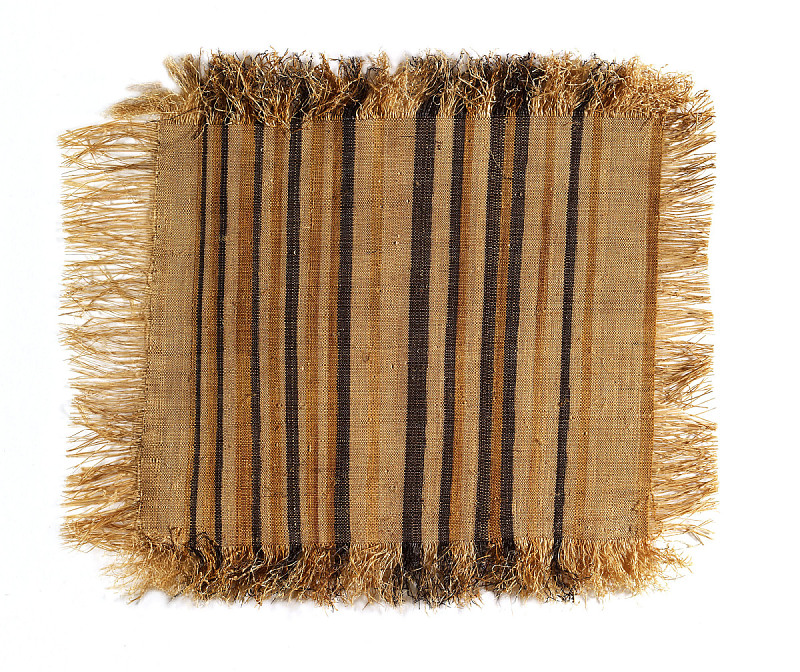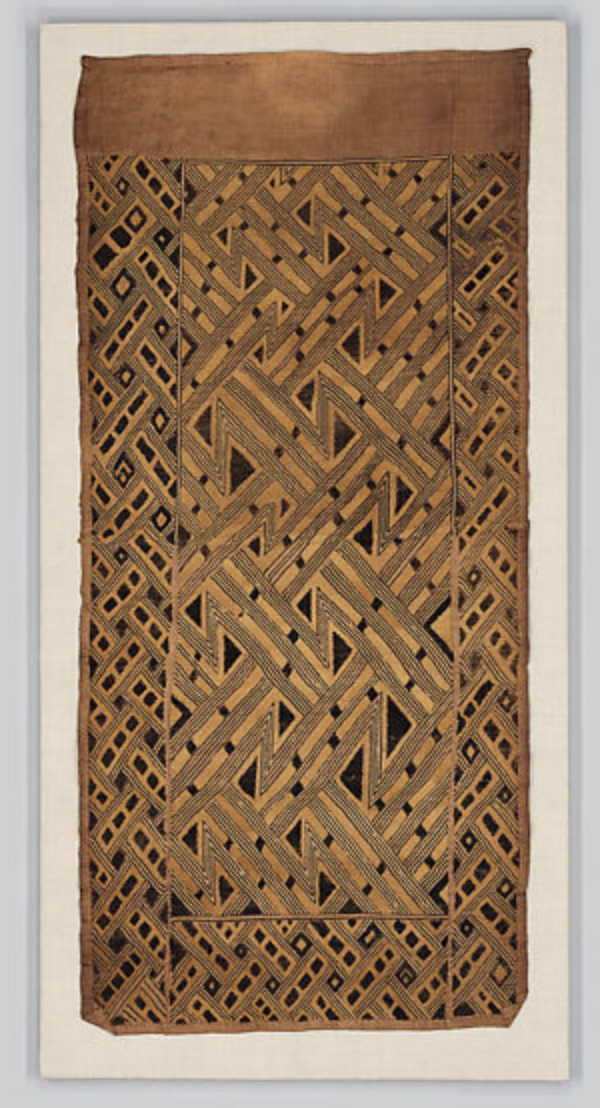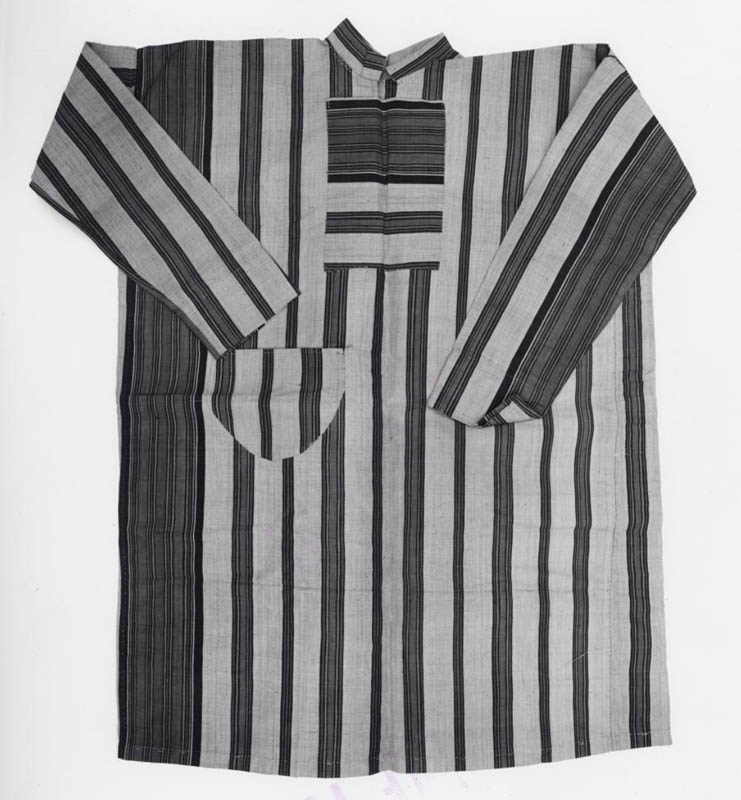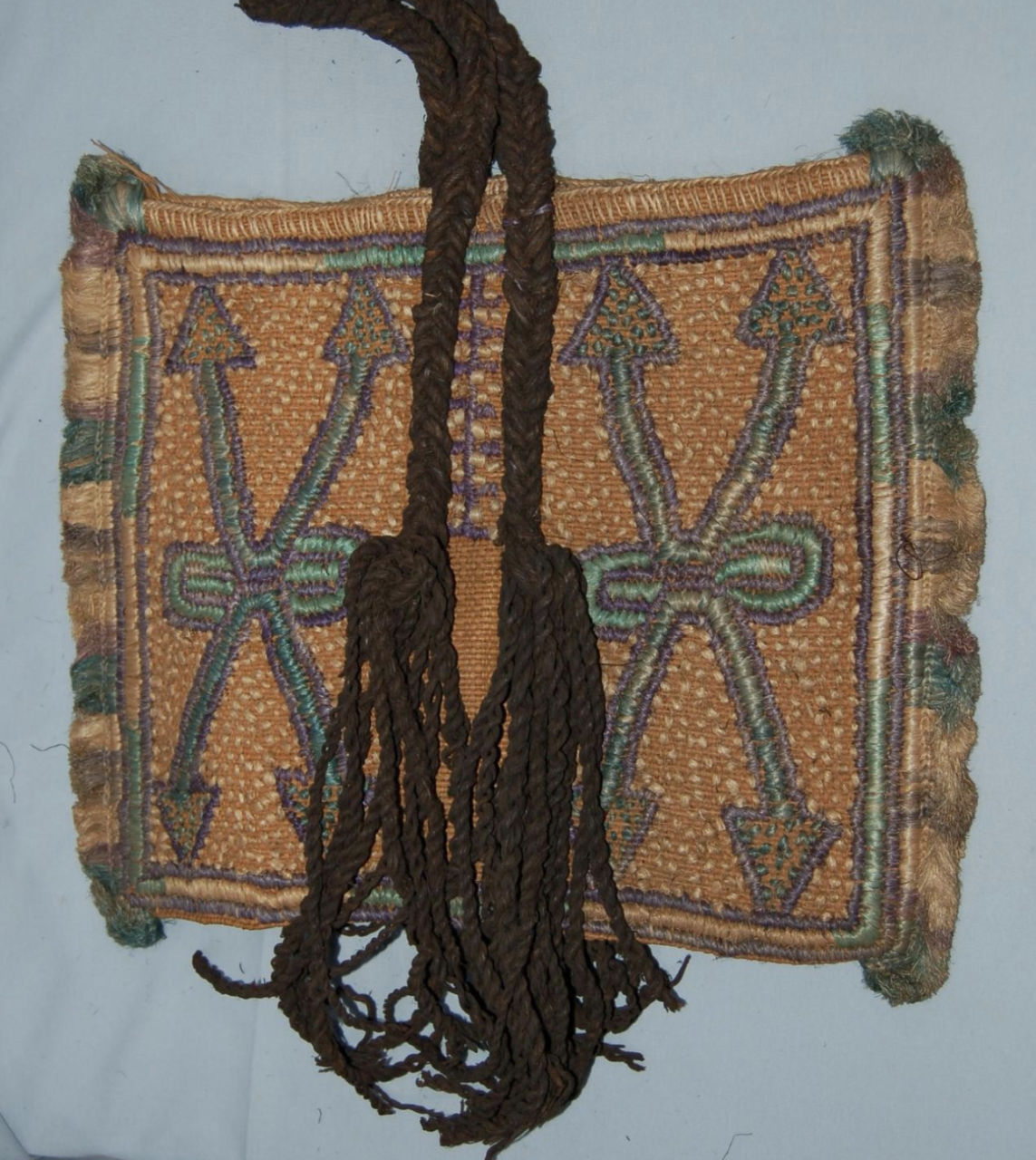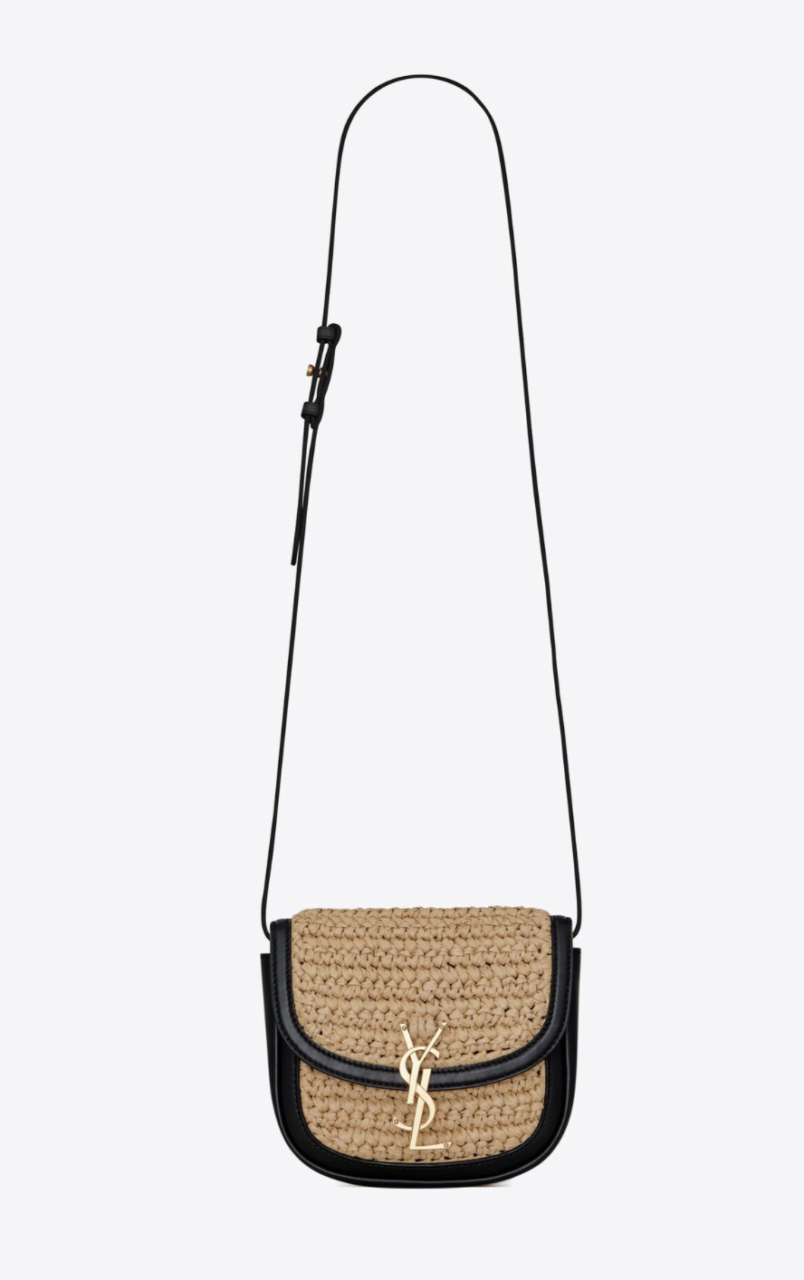Raffia cloth is a type of textile woven from palm leaves and used for garments, bags and mats.
The Details
Raffia, made from raffia palm leaves, can be woven for many different uses: a high-quality raffia cloth can be as soft as cotton, while raffia can also be sturdy enough to make baskets and mats. Raffia mats (Fig. 1) like this black and yellow striped one were valued as a form of wealth as the Smithsonian explains: “In central Africa raffia woven mats, stored flat or rolled into bundles, were a popular form of cloth currency in the late 19th and early 20th century.”
Africa: An Encyclopedia for Students (2002) describes different decorative techniques in central Africa:
“Textiles in the Congo region and other parts of central Africa were traditionally made of raffia. Today the finest raffia weavers come from the former central African kingdom of Kuba. Men weave the raffia cloth in small rectangles. Women decorate these pieces with embroidery or by cutting patterns into the fabric surface. One garment of the region is the ntshak, a long skirt made of many rectangles sewn together. The ntshak is decorated by a group of relatives, either men or women, depending on whether it is to be worn by a man or a woman. The resulting garment belongs to the 6 or 12 people who helped create it.” (184)
A prime example is figure 2 in which we can see a Kuba wrap skirt made of pieced raffia with raffia plain weave appliqué and raffia embroidery in knotted, blanket, and buttonhole stitches.
In figure 3, we see another raffia skirt made by the Kuba people; the garment displays an intricate black and natural raffia design and has a texture sometimes compared to cut velvet. This use of strong contrast is typical of Kuba raffia cloth as Daniel Delis Hill explains in the History of World Costume and Fashion (2011):
“The Kuba of Central Africa are especially well known for woven raffia, which is the supple fiber from the fronds of the palm tree by that name. The plain, tan-colored raffia cloth is decorated all over with various surface embellishments, especially lavish embroidery of rectilinear shapes and patterns stitched mostly in sharply contrasting black.” (265)
Although raffia cloth from the Kuba kingdom is recognized for its fineness and decorative patterning, in Madagascar the textile was also commonly used, especially for garments. In Berg Encyclopedia of World Dress and Fashion: Africa (2010), John Mack writes:
“Along the east coast, the area of the peoples known as the Betsimisaraka, the predominant fiber used in weaving (a female preoccupation, as in most of Madagascar) is raffia. This is produced in rectangular lengths usually with warp striping. Two garments are typically produced from these cloths. One is a wraparound tubular garment (sadiaka) that is worn by women around the waist or secured above the breasts. The other common type of raffia garment is a kind of smock for men tailored with openings for the arm and at the neck. This is known as an akanjobe (from akanjo, a shirt or blouse).” (431–436)
Figure 4 shows a 19th-century hand-woven, tailored akanjobe, with natural dyed blue, brown, black and yellow stripes (photo is unfortunately in black and white). The Smithsonian notes that the durable raffia shirt “served well in the mud, rain, and standing water of the rain forest homeland” of Eastern Madagascar.
The raffia bag from Cameroon in figure 5 shows the versatility of the textile; constructed by a rectangle folded in half and sewn up the sides to make a bag, it has green striped fringe along each side and two decorative embroidered green Xs.
Fig. 1 - Maker unknown (Democratic Republic of the Congo). Raffia Cloth, early 20th century. Raffia; 33.2 x 28.3 cm (13 1/16 x 11 1/8 in). Washington: Smithsonian National Museum of African Art, 99-13-47. Gift of S. M. Harris. Source: Smithsonian
Fig. 2 - Maker unknown (Kuba). Woman's skirt, ca. 1920-70. Raffia plain weave with appliqué and embroidery; 535.9 x 44.5 cm (211 x 17.5 in). Philadelphia: Philadelphia Museum of Art, 2001-170-5. Source: PMA
Fig. 3 - Maker unknown (Kuba peoples, Democratic Republic of the Congo, Sankuru River region). Woman's overskirt, ca. 1900. Raffia palm fiber; (22 x 48 in). New York: The Metropolitan Museum of Art, 1999.522.14. Gift of William B. Goldstein. Source: The Met
Fig. 4 - Maker unknown (Madagascar). Man's Shirt "Akanjobe", 19th century. Raffia; 95 x 158 cm. Washington: Smithsonian National Museum of Natural History, 029967. Source: SNMNH
Fig. 5 - Maker unknown (Cameroon). Bag, Acq. 1954. Raffia palm fibre and sisal; 66 x 45 cm. London, England: British Museum, Af1954,+23.3410. Wellcome Institute for the History of Medicine. Source: British Museum
Its Afterlife
Today raffia is still used in contemporary fashion, especially in accessories and during the warmer months. There are raffia items available in a variety of price points and quality. French brand Saint Laurent produced a luxury raffia hand bag as part of their 2021 Resort collection (Fig. 6).
Fig. 6 - Saint Laurent (French). Kaia small satchel, Resort 2021. Raffia, leather; 18 x 15.5 x 5.5 cm. Source: Saint Laurent
References:
- Hill, Daniel Delis. History of World Costume and Fashion. Upper Saddle River, NJ: Prentice Hall, 2011. http://www.worldcat.org/oclc/144223528
- Mack, John. “Madagascar.” In Berg Encyclopedia of World Dress and Fashion: Africa, edited by Joanne B. Eicher and Doran H. Ross, 431–436. Oxford: Berg Publishers, 2010. http://www.worldcat.org/oclc/680074548
- Middleton, John, ed. “Crafts” Africa: An Encyclopedia for Students. New York: Charles Scribner’s Sons, 2002. http://www.worldcat.org/oclc/1181389545
- “Raffia Cloth – Works – National Museum of African Art – Smithsonian Institution.” Accessed July 20, 2021. https://africa.si.edu/collections/objects/9871/raffia-cloth;jsessionid=695D75FFC3F7B75952D6468399A8236C.
- Smithsonian Institution. “Man’s Shirt ‘Akanjobe.’” Accessed July 20, 2021. https://www.si.edu/object/nmnhanthropology_8350790.


